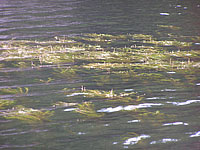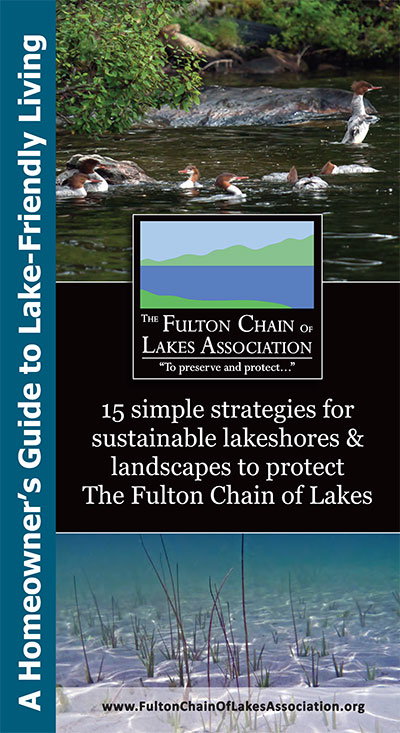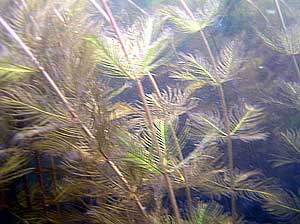Working together
to protect Fulton Chain waters
The beauty of Fulton Chain waters has made it a very popular destination. Traditional summer camps are giving way to year-round homes, as more and more people want to enjoy the beauty and tranquility of lakeside living. The landscape is dramatically changing as lots are cleared and driveways paved, and trees are removed to make way for fertilized lawns. The cumulative effects from such drastic changes to the landscape mean big changes to the health of our lakes. The FCLA has been active in the long-range development planning for the area, it is vigilant in monitoring our waters for non-native invasive plants and was instrumental in establishing programs such as the Bti program that is currently used to control black flies.
Recent studies have linked water quality with property values on lakes throughout the US from Minnesota to Maine. Lakeshore properties are in demand, and the value of these properties depends upon the quality of the lake. People prefer clean water and will pay more to live on lakes with better water quality. What you and your neighbors do to protect and improve the water quality of The Fulton Chain of Lakes will protect your lakeshore property investment and quality of life.
We address the four main ways to protect the water quality of The Fulton Chain of Lakes and your investment and enjoyment of your lakeshore property. If we all practice lake-friendly living, we can all enjoy the beauty and health of our lakes for generations to come.
1. Minimize Runoff
Runoff picks up pollutants and carries them to the Lake.Minimize the hard surfaces that create runoff.
2. Eliminate Pollutants
Eliminate pollutants at their source. Avoid using fertilizers,household toxins, and other chemicals. Prevent soil erosion
and failing septic systems.
3. Capture and Infiltrate
Capture and infiltrate any pollutant-carrying runoff that youdidn’t eliminate before it reaches the Lake - with shoreline
buffers, rain barrels, and rain gardens.
4. Monitor our Lake Front and Watercrafts for Invasive Plants and Animals
Monitor lakefront shorelines and your watercraft for unfamiliar aquatic plant forms.
Alerting the Fulton Chain of Lakes Association and Lake Stewards at boat launches and washing stations is the best offence against invasive species.
Households Lawns and Planting
When you fertilize your lawn you are fertilizing our lakes. A state law limiting the use of phosphorus lawn fertilizer took effect on January 1, 2012. If you live near or on a lake use as little fertilizer as possible. If it feeds your lawn it feeds algae and seaweed. Rainfall will carry fertilizer into the lake. Use ONLY No-Phosphate (middle number 0)
Lawns and Fertilizer
When you fertilize your lawn you are fertilizing our lakes. A state law limiting the use of phosphorus lawn fertilizer took effect on January 1, 2012. Click here to learn when fertilizer can be applied and the requirements for using fertilizer. near an open body of water. If it feeds your lawn it feeds algae and seaweed. Rainfall will carry fertilizer into the lake.
Be on the lookout for non-native invasive aquatic plants…
Eurasian Watermilfoil
- Non-native plant
- Submerged plant
- Whorled leaves - an arrangement of 3 or more leaves.
- 10 leaflets per leaf
- Blunt leaf tips
- Reddish growing tip
- Flowering spike in Jul/Aug


"Adirondack Watershed Institute Stewardship Program" Clean, Drain, Dry
Home | About Us | Directors | President's Update | Membership | Boating | Water Quality | Shorelines | Publications | Links | Contact Us
Copyright © 2019 -
Fulton Chain of Lakess Association All Rights Reserved
HutherCreative

